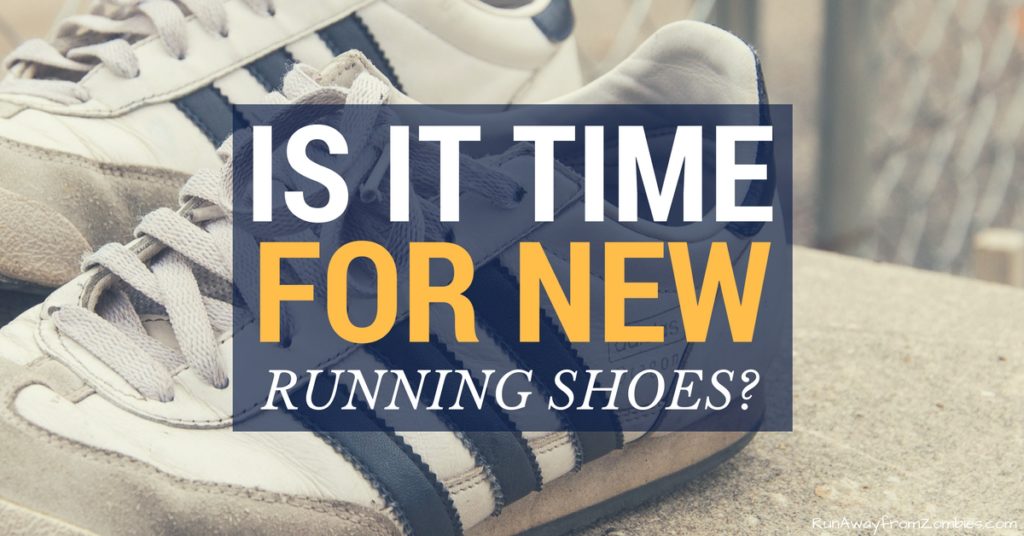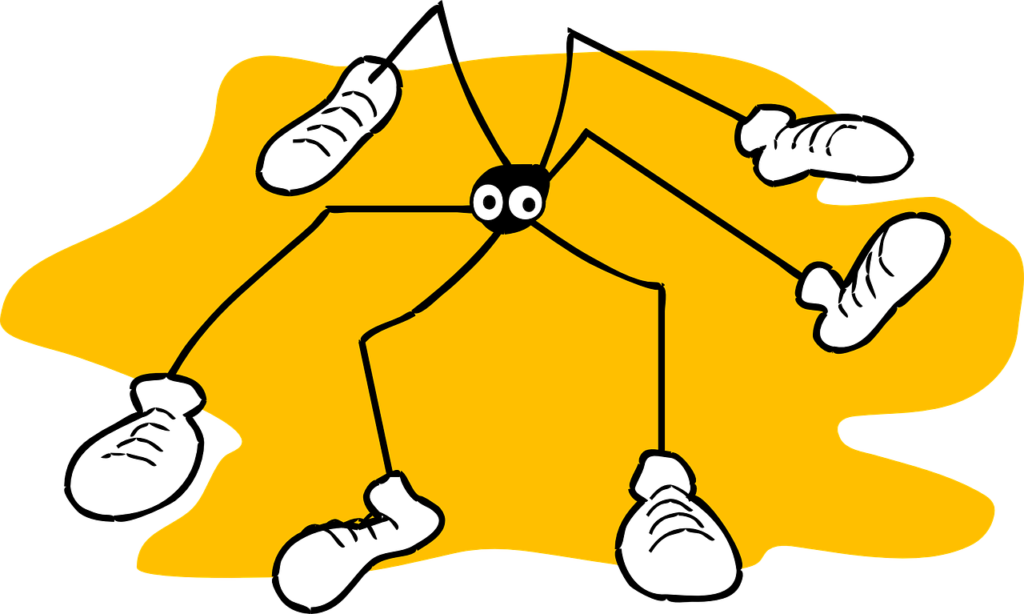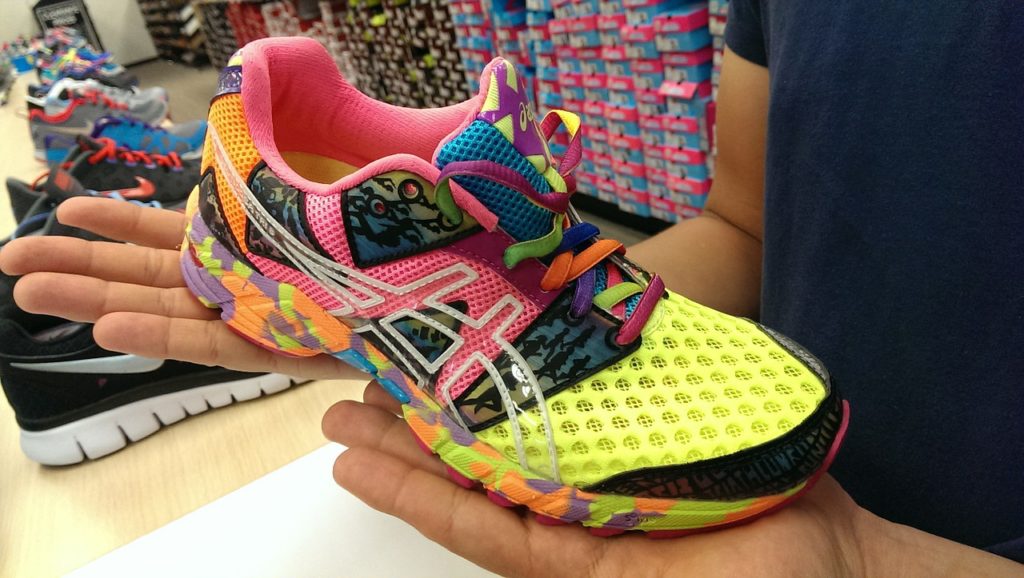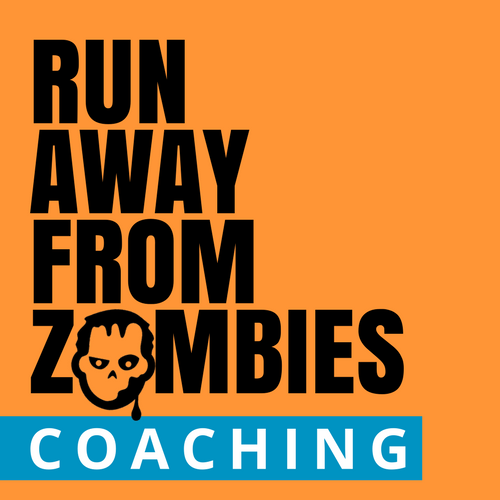You’ve got your first pair of shoes. You’re running. You’ve run a couple of races. And you think, “Wait, when should I buy new running shoes?” At what point do you replace your running shoes?

Running shoes typically last 300 to 500 miles, depending on the type and amount of material in the mid-sole. Most shoes have EVA foam, which has thousands of little cells filled with air. When you run and put weight on the shoe, the foam compresses and absorbs shock. It then springs back up. After awhile, the foam stops springing back up. The cushioning loses its effectiveness and breaks down.
When Should I Buy New Running Shoes?
- New things are achy or old things are achy again. As you lose cushioning, you may feel more ‘beat up’ after your runs.
- Twist test: gripping the heel and toe of the shoe, twist. If it wrings like a sponge and isn’t a racing flat, the cushioning has probably broken down.
- Place your shoes on an even surface and look at them. Do they stand straight up, or have they gone all wonky?
- Note that the shoe’s upper part and even the bottom treads are least likely to wear out first.
- Go try on the same pair at your shoe store. Feel the difference? Feel taller and bouncier?
Should you go ahead and buy your second pair of running shoes? Without looking at them, I say YES! You can begin rotating your shoes.

Why should I rotate running shoes?
You can rotate wearing 2 or 3 (or more) pairs of shoes.
- Different shoes will stress your feet in different ways, encouraging different muscle activation to possibly reduce injury risk
- Each pair may last longer, because the EVA material will have more time to rebound between runs
- If they’re damp from sweat or soaked from rain, you’ll have a back-up for the next day
- If your feet are picky like mine, it can make transitioning and trying new styles less frustrating

Your new running shoes
Remember to only wear your running shoes for running. You will compress the EVA standing in them all day. I am guilty of this.
Track your mileage for each pair of shoes. You can do this with rough estimates by week, create a log, or use an app. The free Nike+ app has a shoe tracking feature, which I use. I select which pair of shoes I ran in at the end of my workout and it adds up the mileage.
Also take note of how rigid they feel, how bouncy they are, how the EVA feels under the insoles, do the twist test. This will give you information for a few hundred miles in, when you’re wondering, “Is this how they’ve always felt?”
Further reading:
- Buying my first shoes and gait analysis
- Runner’s World Study Backs Rotating Shoes Reduces Injury Risk





Important post. I usually rotate my running shoes. I have a favorite store and if I see an older color of my favorite running shoe brands on sale I will pick up a pair then at a large discount…
Fiona
My return to keep ratio on running shoes is pretty high so I keep away from the final sales rack, but that’s a fantastic tip for less picky feet!
Thanks, Fiona!
Good tips! I only recently learned about the twist test and was only going off mileage before that. I bought two pairs of shoes a couple months ago so that I can start rotating them instead of wearing out one pair at a time.
You taught me the twist test!
I think my feet have been much better off rotating shoes. And it’s nice if one pair gets wet!